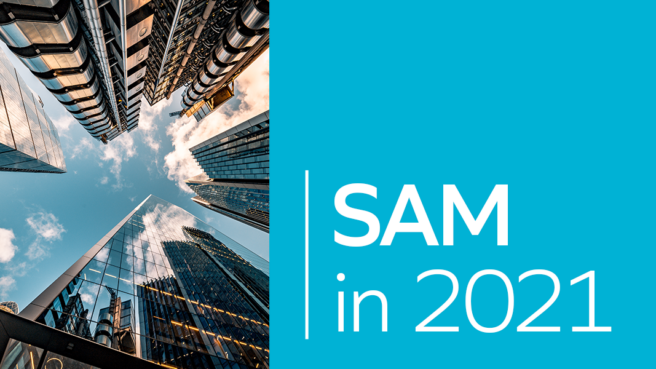SAM in 2021: Be Productive, Not Perfect

Software asset management (SAM) programs can give you complete visibility across your digital landscape, including a greater understanding of usage patterns, which are critical for optimization. Optimization can ultimately help you reclaim budget and reduce both financial and operational risks. But as we covered in our previous blog in the series, the most successful SAM programs are closely aligned to organizational goals. They are supported and implemented by cross-functional teams, not just IT. As with most strategic initiatives, you’ll see the highest ROI with top-down support.
When implementing a SAM program it’s crucial to work incrementally and focus on what will create the most significant impact first. But with so much to consider, where do you start?
When you focus exclusively on onboarding new software but leave out policy and procedure on maintenance or removal, for example, you are exposing your organization to costly risk. For smooth tactical execution, you will see the most impact when your SAM program maps to the entire software lifecycle, as illustrated below:

- Requisition: The process for identifying and requesting software.
- Procurement: The process for purchasing software.
- Deployment: The process of installing software on hardware.
- Support (Monitor): The process of tracking software installations; this includes maintenance negotiations and payments.
- Retirement: The process for removing software that is no longer needed or transferring the software from one location or individual to another location or individual.
Finding incremental success
To achieve the highest levels of SAM and organizational maturity, your cross-functional team should consider processes designed to span the entire software lifecycle — starting with acquisition through retirement. Treat this as your strategic vision; to achieve holistic coverage of your processes aligned with the full lifecycle. What this means for your organization is that each software asset will be maintained in the most cost-aware and optimized position, including when to remove it gracefully to complete the optimized position.
But remember, this is not a set-and-forget strategy. It’s a journey of continual improvement and not a one-size-fits-all approach. When tailoring your program to your organization’s needs, it’s important to strive for productivity rather than perfection.
Navigating complex processes
One of the biggest challenges facing software asset managers is the sheer complexity of implementing a new program and identifying specific tasks that address the entire software lifecycle. The processes written in bold indicate a good starting point if your SAM program is new or if you’re looking to start a review of an existing process set.
-
Create and maintain a SAM plan process
-
Outline a procurement process
-
Create a software request process
-
Define a software re-harvesting process
-
Identify a software sourcing process
-
Outline a software change management process
-
Implement a corporate governance process
-
Maintain a supported software catalog process
-
Define a software rationalization process
-
Clarify your joiners, movers and leavers process
-
Determine how scope will be verified
-
Identify your named user verification process
-
Outline an asset use verification process
-
Pre-define your SAM review process
-
Indicate a BYOD process
-
Determine the license compliance process
-
Establish a software removal process
-
Author a hardware disposal process
-
Create a SAM competence and training process and set schedule
-
Identify a reporting process
-
Establish an orphan data process
-
Clarify a support and maintenance review process
Start taking action
The list above demonstrates how challenging and time-consuming finding a SAM program can be; start with the items in bold, then continue to focus on processes that will have the most significant impact on your organization. Productivity is ultimately qualitative rather than quantitative: not so much by the number of tasks or processes defined, but the outcome of each task.
It’s essential to set clear metrics for each process and to be able to measure the success against organizational goals to reinforce the value of the SAM program to gain continual support. Of course, a SAM program is only as successful as the people behind it. By investing in the right people, and with a well-organized team, you can roll out these processes over time and see your SAM success grow.
If you’re not sure where you stand in your SAM journey, or you’re just getting started, try our free, Software Savings Calculator. Using your current software spend as a benchmark, our cost savings calculator will help estimate returns based on your current and target level of SAM maturity.
This post is the third in a series of articles on SAM. Watch for future posts that will include insights on SAM implementation, how-tos and more.